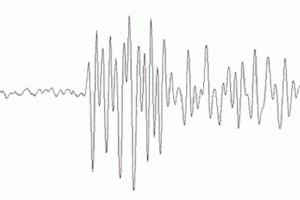USGS: 14,588 Worldwide 4.0+ Magnitude Earthquakes in 2015
The United States Geological Survey recently released its 2015 earthquake statistics.
A total of 14,588 earthquakes with a 4.0 or great magnitude occurred globally last year. The statistic is on par with the average in 2014 of about 40 earthquakes each day with a 4.0 magnitude or higher daily.
USGS officials say the statistics could slightly vary as final results undergo seismic analysis at the USGS National Earthquake Information Center in Colorado.
Across the world in 2015, 19 earthquakes shook with a 7.0 or higher magnitude. The number is one above the annual average of about 18 since 1900.
In total, 9,612 people died as a result of earthquakes last year. The number was a large increase compared to 2014’s numbers, which totaled 664 deaths. The 2015 number included deaths attributed to the 7.8 magnitude quake occurred on April 25 in Nepal. According to the United Nations Office for Coordination of Humanitarian Affairs, 8,964 people died in the quake.
Two-hundred-and-eighteen people died less than one month later when another earthquake struck Nepal.
In addition, deadly earthquakes also took place in Afghanistan, Malaysia, and Chile in 2015.
An area southwest of Umnak, Alaska was home to the largest earthquake in the United States. On July 27, an earthquake with a 6.9 magnitude occurred. The earthquake took place in a remote location so no damage occurred.
Thirty-two earthquakes of a magnitude 4.0 and greater in Kansas, Oklahoma, and Texas took place last year. This is in comparison to 17 in the same areas in 2014.
Moderate earthquakes occurred in Nevada and Arizona, with a 5.0 magnitude east of Challis, Idaho on Jan. 3, 2015.
No fatalities occurred as a result of earthquakes in the U.S.
USGS monitors earthquakes worldwide, with real-time data from about 1,800 stations in more than 90 countries. These stations include the 150-station Global Seismographic Network, which is jointly supported by the USGS and the National Science Foundation and operated by the USGS, in partnership with the Incorporated Research Institutions for Seismology consortium of universities.
Domestically, the USGS partners with 11 regional seismic networks operated by universities that provide detailed coverage for the areas of the country with the highest seismic risk.
















